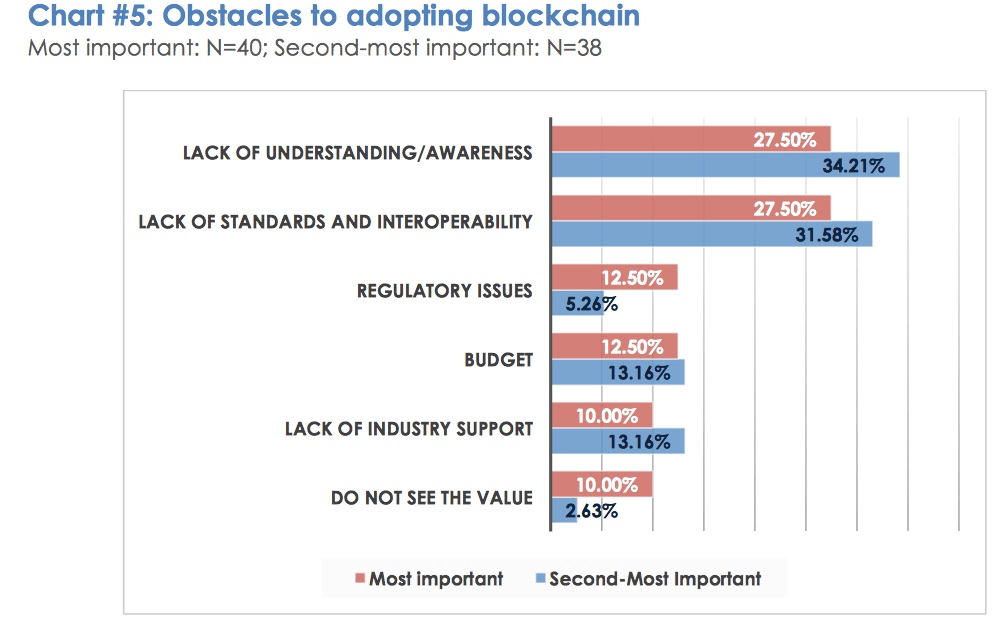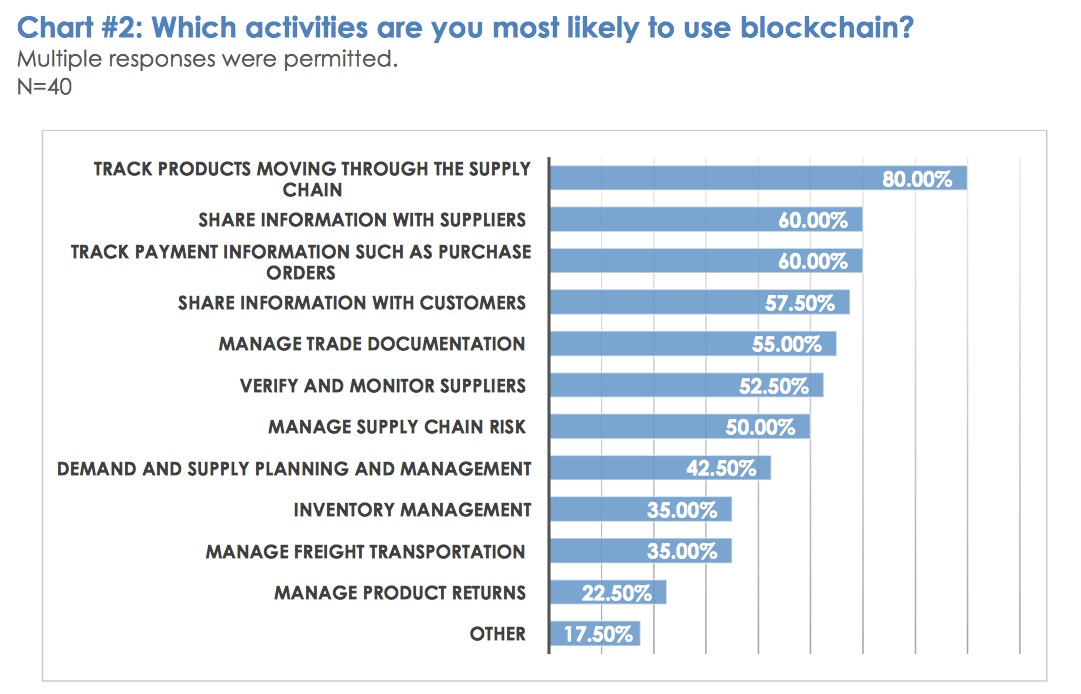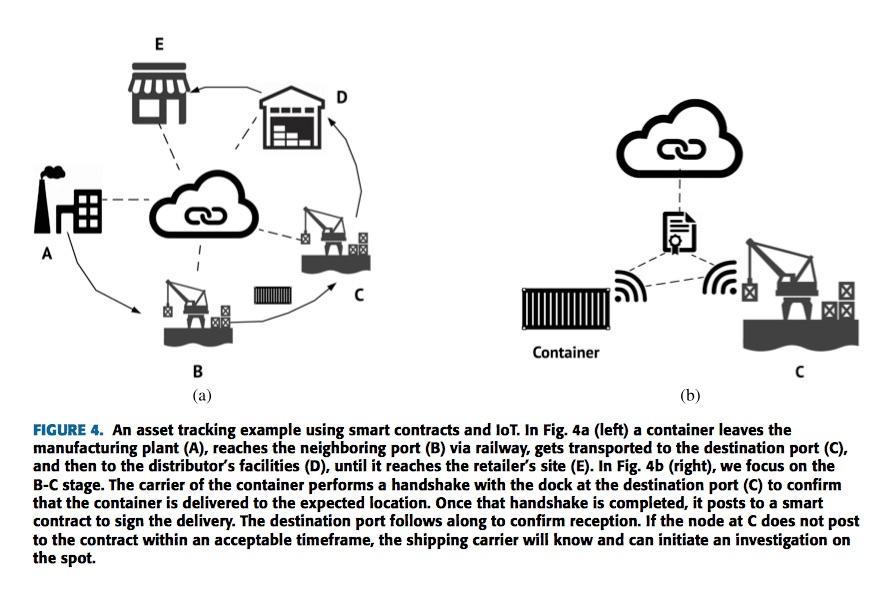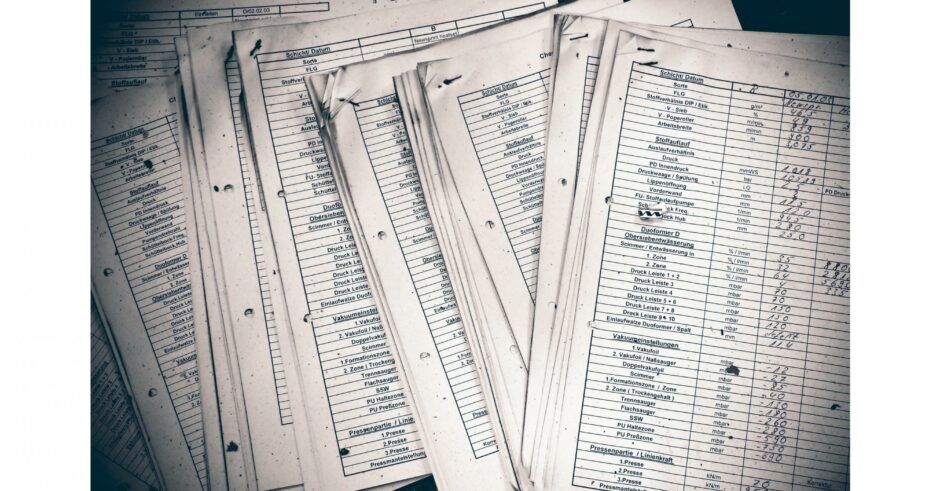To be honest, I haven’t totally figured out all of the details of the inner workings of the blockchain technology. And, I do not think I will ever try to as some of it is very technical. I also do not believe that Procurement professionals should do it either. However, it is important to understand the implications of the blockchain technology. Because of the way the blockchain works, it has unique characteristics that represent a breakthrough with tremendous value for Procurement.
Many present the blockchain technology as a ledger or some database. Despite being true, this is restrictive and does not do it justice. The blockchain is much more than that.
Describing blockchain as a form of digital trust is more meaningful, and it gives a better idea of its true potential. It is because trust between partners is at the heart of making business. More trust makes making business easier, streamlines many processes, and creates transparency. Furthermore and more importantly, it means that blockchain can serve as the backbone of new types of cooperation between machines (M2M) and between humans (H2H) that were, until now, limited by the cost of building trust or the lack thereof.
“Blockchains allow us to have a distributed peer-to-peer network where non-trusting members can interact with each other without a trusted intermediary, in a verifiable manner.” Blockchains and Smart Contracts for the Internet of Things, Institute of Electrical and Electronics Engineers (IEEE)
Even if applications of blockchain technology are still mostly at an experimental stage, some companies are looking at the various possibilities that it represents. So should Procurement!
Blockchain, a form of digital trust
If you ever bought a house or apartment, you know too well the lengthy and costly process that goes with it. Without going into the details, the process is very paper-based and involves a lot of different people hence costly and lengthy. It serves the purpose of creating trust by ensuring that:
- the seller is who he says he is,
- the buyer is who he says he is,
- the object of the transaction corresponds to what the purchaser thinks he is buying,
- the seller owns the object of the transaction,
- the buyer has the means to pay for the object of the transaction,
The process also records that the transaction happened. So, the next time that someone sells the house, the information of who owns it is up to date and undisputed.
Whenever there is a transaction, there is a transfer of ownership. So, trust is an important factor to make a deal happen. It is precisely the challenge that the blockchain addresses. It is a form of digital trust that speeds up transactions and removes intermediaries. It is why it can have massive implications in the business world as supply/value chains are interconnected and complex.
What makes blockchain so important?
To understand why blockchain represents such a tremendous potential for supply chain management and for Procurement, it is important to understand some of its current characteristics and future developments.
Blockchain is often described as a distributed ledger or, in other words, as a database logging transactions (an exchange of value). Although it is technically correct, this does not serve the purpose of building the case for blockchain or of making its potential tangible.

Lack of understanding what blockchain means = obstacle #1 to adoption! Source
It is in part because databases logging transactions existed before blockchain and are better than the first generation of blockchain with respects to performance.
”By traditional database standards, traditional blockchains like Bitcoin are terrible: low throughput, low capacity, high latency, poor query support, and so on.” How Blockchains could transform artificial intelligence, Dataconomy
What makes blockchain so valuable is linked to how records are added to the database:
- a network of computers stores and verifies any new record, making the blockchain more robust than a single instance (like in most traditional databases),
- every transaction is linked to the previous one, creating a complete traceability and preventing any data alteration,
- it is decentralized (peer-to-peer), there is no authority deciding rules or with an interest to manipulate data in one way or another.
Because of the above, the history in the blockchain is immutable and impartial. Data is shared among parties (publicly or privately) and cannot be changed by anyone.
“Protected from deletion, tampering, and revision. In this world every agreement, every process, every task, and every payment would have a digital record and signature that could be identified, validated, stored, and shared. Intermediaries like lawyers, brokers, and bankers might no longer be necessary. Individuals, organizations, machines, and algorithms would freely transact and interact with one another with little friction. This is the immense potential of blockchain.” The Truth About Blockchain, Harvard Business Review
So, with blockchain, you can trust the data.
And, because you can trust the data, you can safely build on top of it without the risks inherent to less secure databases. That opens doors to many applications to further streamline business and operations.
Also, and as I mentioned earlier, blockchain is an evolving technology. Recent developments push further the automation aspects. The newest blockchain technology is also programmable. Smart contracts represent another very valuable application because you can build rules into the blockchain; rules that will execute under certain conditions based on the data in the blockchain.
So, with smart contracts running in the blockchain, you can trust the data and the process that runs on top of it.
Impact and value of Blockchain for Procurement
Streamlined business
Because the blockchain is, by design, a secure log of transactions and of exchanges of value (the blockchain technology finds its origin in Bitcoin, a digital currency), its application naturally extends to streamlining payments by removing intermediaries and by being fully digital.
“A recent white paper put out by JP Morgan suggests that the current set of buying channels that exists in most organizational supply chains is a mammoth — literally a dinosaur in this case! This study suggests that for business-to-business (B2B) transactions, despite the new developments in payments, to a large extent businesses in the United States still rely on checks for paying their vendors and suppliers. A commonly cited reason for this is that “checks work. This is based on a survey of 412 respondents from the Association for Financial Professionals (corporate practitioners). Amazingly, although the percentage of payments is going down (see trend line in Figure 1), over 50% of organizations still write checks for their B2B transactions!” Blockchain has real potential to reduce ‘old school’ procure to pay transactions, Robert Handfield
The benefits from blockchain extend beyond just streamlining payments. It applies to a lot of other areas and processes that are currently still very paper based and that, as payments, are about trust between business partners in the value/supply chain. Some examples:
- Clause makes contracts connected to the real world by relying on the blockchain
- WAVE connects all members of the supply chain to a decentralized network and allows them a direct exchange of documents via the blockchain eliminating disputes, forgeries, and unnecessary risks.
- Freight tracking and the associated import/export paperwork as tested by Maersk (see here)
- …
The Maersk example also gives a glimpse of the larger potential of blockchain. A possible extension of the application mentioned in the article is ”to optimize freight flows by publicly identifying empty containers and finding takers for the extra capacity.” This optimization of free capacity/surplus is very similar to the business concepts of the Uber, Airbnb, and the likes. Blockchain can serve as a basis and pillar of the platform economy! More on that later…
Improved transparency
“The current supply chain system is in fact so opaque that after research by myself and my colleagues at ConsenSys, we couldn’t find any definable or verifiable information on the supply chains of any major consumer technology company. We have no way of knowing how much slave and child labor, environmental destruction, and violence and political turmoil goes into the production of any of our products, not to mention the actual monetary costs. The consequences of this supply chain mismanagement and fragmentation are evident and dire.” The Supply Circle: How Blockchain Technology Disintermediates the Supply Chain, ConsenSys
Beyond serving the purpose of transacting more securely and efficiently, blockchain technology can also increase transparency in the supply chain.
At each step of the value chain, from the extraction of raw materials to the customer, the blockchain technology can be used to store and record all the transactions and exchanges of ownership. It is no wonder then that this application is one of the most comment mentioned use cases by organizations investigating blockchain.

It is because having a complete and trustworthy traceability facilitates the due diligence that organizations have the responsibility to perform to comply with rules and regulations (child labor, modern slavery, conflict minerals, product traceability,…) while reducing the effort to do so. And, like in the Maersk example, it can also help in improving business processes by making new data available for analysis. These are the reasons why many companies with complex supply chain in industries with strict controls and requirements related to product traceability (pharmaceutical, food & beverage…) are testing the blockchain:
“According to Frank Yiannas, Vice President of Food Safety at Walmart and leader of the blockchain effort, the pilot project will give Walmart a sense of how blockchain technology works and how well it scales. The main challenge, Yiannas explained, is setting up technology for farmers, field workers and others to collect data and insert it onto a blockchain. Innovative data entry tools running on ubiquitous smartphones, with backends in the cloud, are expected to allow field workers to input relevant data to a blockchain ledger that tracks all data, making it accessible “in minutes, rather than days,” Yiannas said, thereby improving Walmart’s supply chain efficiency, identifying bottlenecks and reducing food waste.” Walmart Testing Blockchain Technology for Supply Chain Management, Bitcoin magazine
On top of that, it also addresses another important concern of many companies: counterfeit.
This video from Block Verify illustrates how:
Further enablements in M2M/H2H cooperation
Probably the most important application of blockchain (and that is seldom talked about) has to do with creating a backbone for enhanced collaborations:
- M2M: Machine-to-Machine
- H2H: Human-to-Human
It is because it addresses the issues of trust and identity that are currently hindering and limiting these collaborations.
M2M cooperation
As stated earlier, with blockchain you can:
- trust the data stored in it,
- create further data collection points,
- execute programs (smart contracts).
That creates a distributed system (data + process) that you can trust (completeness, accuracy, authenticity, resilience). So, you can automate further without being exposed to usual risks due to lack of data, poor/corrupted data, unreliable execution, interferences by 3rd party/intermediaries,… It opens the door to new “apps” that will run exactly as programmed.
So, blockchain is the ideal infrastructure for machine-based activities that the Internet of Things (IoT) has been lacking.
An immediate area of application of interest for Procurement is Supply Chain Mgmt.

Source: Blockchains and Smart Contracts for the Internet of Things, Institute of Electrical and Electronics Engineers (IEEE)
As the example above illustrates, the movements of a container can be tracked (IoT) at all times. And, whenever it reaches certain points, the blockchain will record the activity and smart contracts will execute automated actions.
The concept also extends to upstream/downstream activities by adding to the landscape:
- automated inventory tracking/management
- automated ordering/requisitioning/replenishing
That could, for example, apply to MRO and be the next logical evolution of the “MRO vending machine” that many companies are using to improve their MRO purchases:
“At Coupa inspire, one company described an innovative method that they used to track and control demand on the factory floor []. They installed vending machines and when a worker needed something, they needed to go to the machine and punch in their id and slot number. Nothing was restricted (and no limits were placed), but every “requisition” was sent to the central Procurement system which not only updated MRO inventory but also tracked who used what, and allowed Procurement, and departments, to understand usage patterns better.” Demand Control: Reduce, Reuse, Recycle, Redefinition and … Requisition Everything!, Sourcing Innovation
The same kind of concept can be extended to buying and selling to create automated markets. For example, TransActive Grid is an energy market enabled by the blockchain technology that does that.
H2H cooperation
Blockchain can also enhance Human-to-Human cooperation because such collaboration also relies on trust. It is particularly the case when partners do not know each other which often happens with new business models (platform/gig economy).
Trust is built on two pillars: identity and reputation. Because of its cryptographic nature, blockchain embeds mechanisms that ensure that users are who they say they are. That covers a user’s identity and extends to other credentials:
“Using the blockchain and strong cryptography, it is now possible to create a certification infrastructure that puts us in control of the full record of our achievements and accomplishments. It will allow us to share a digital degree with an employer while giving the employer complete trust that the degree was in fact issued to the person presenting it.” Certificates, Reputation, and the Blockchain, MIT Media Lab
Reputation is nothing else than the result of past transactions. And, as detailed earlier, the blockchain logs all transactions securely and transparently. So, the blockchain makes it easy to measure and know someone’s reputation.
“Reputation measures how much the community trusts you, and is calculated on your previous transactions and interactions with the community. The greater your reputation, the more trustworthy you are seen to be on the network and, with a user’s reputation on the line, users choose to behave more honestly on the network.” Rep on the block : A next generation reputation system based on the blockchain , School of Computing University of Portsmouth, U.K.
So, whenever business partners have to cooperate and do not know each other, the blockchain can help to understand who you will be working with. It is, therefore, a facilitator for making business with new partners because it is lowering the cost and risks to do so which are reasons that are traditionally behind the rationale to aggregate spend towards a limited number of suppliers and/or to favour (consciously or unconsciously) incumbents. The use of blockchain can allow Procurement organizations to revisit their category strategy!
Too good to be true?
Despite all of the above, the blockchain technology has its downside. First of all, it is still experimental. Most implementations are pilots and most organizations are test driving it. It is because there are still some unanswered questions.
As mentioned earlier, one of them is scalability. The way records are processed and that make the blockchain a secured repository has a price: speed. It can be too slow for real-time applications and even for a good usability. On top of that, scalability relates to the scope. If, as mentioned earlier, an organization uses the blockchain to track and monitor all movements in its supply chain from the extraction of raw materials to the end-user of its product, this can create a gigantic mass of data. An amount of data so large that it would hinder the process it is supposed to improve and that would quickly become unusable (big data can easily turn into fat data).
Another aspect that may explain why organizations have not yet embraced blockchain is the risk to be locked in.
“But right now, when you get down to it, the most “open” blockchain proposals are akin to the most “open” supplier networks … and there are no truly open supplier networks. Every supplier network of note in existence is owned by a for-profit company and even those with “open” APIs or “open” integration are not really “open”. Yes, there is an API that third parties can integrate into, but in every case there is a “catch” — either the integration is limited or integration is only permitted at a “price”. It’s not open and free — and “openness” is only “open” as long as the network decides they are “open’.” The big bad blockchain, Sourcing Innovation
Except in the case of organizations running their own blockchain network (which would go against impartiality, one of the advantages mentioned earlier), a 3rd party operated blockchain could become “a prison for […] data that will come with hefty prison maintenance fees.” So, until these questions of data ownership, portability, and interoperability are addressed, companies will limit their investments and implementations.
Another aspect has to do with the fact that blockchain is said to be unhackable. The blockchain technology heavily relies on cryptography and peer-to-peer networks that make it very robust and resilient. But history has proven that almost nothing is unhackable (like the SWIFT system, to take an example in an area close to blockchain). The blockchain may be very, very, very, very difficult to hack. However, someone with the right motivation (fame, money,…), tools, and probably a lot of time, could, one day, hack it. And, the more the blockchain becomes popular, the larger the reward to do so!
Also, even if we assume the blockchain to be totally unhackable, systems around it are not. Systems and programs connected to the blockchain may be vulnerable to attacks and/or bugs. Smart programs are an example, the DAO attack is a reminder of that kind of risk.
Conclusion
Blockchain represents a step forward that Procurement organizations should not ignore because it opens the door to further improvements from streamlining paper-based processes to enhancing cooperation.
However, organizations should make an informed decision about testing blockchain. Doing it because others are doing it or because of the hype are not good reasons and could lead to regrets in the future.




